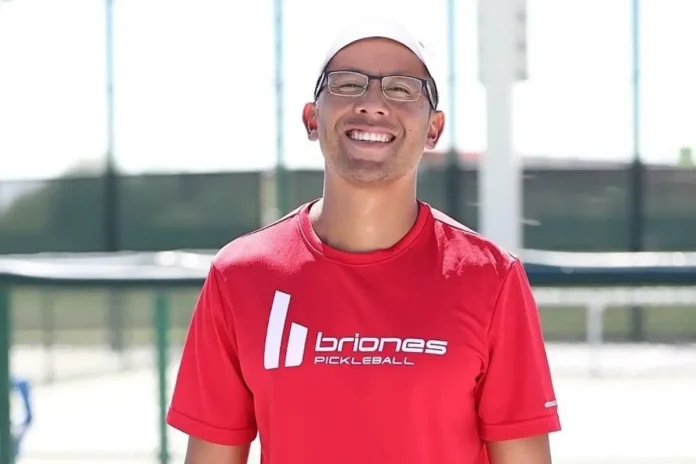Pickleball Two-Handed Backhand Dink Tips: Pickleball coach Jordan Briones is helping players improve their two-handed backhand dink with a simple, step-by-step approach. Briones says this move gives players more control, better spin, and added pressure on their opponents. His guidance focuses on using footwork and paddle position to play better dinks.
The two-handed backhand dink is useful for its balance and strength. Jordan Briones explains that it gives players “more stability, more topspin, more control, [and] more pressure on your opponent.” These benefits make it a valuable skill to master in today’s fast-paced pickleball matches.
Step 1: Move Your Feet and Get Low
Jordan Briones advises players to stay ready by moving their feet and getting into a low stance. He says, “Number one, you have to move your feet and get in a low position. From wherever you’re standing, a lot of times that dink won’t be perfectly set up where you would wanna hit it.”
Getting low helps with paddle preparation. This makes it easier to react quickly and keep control during a rally.
Step 2: Keep Your Paddle Tip Below the Ball
After setting your stance, it’s important to position the paddle under the ball. Jordan Briones explains, “Now when I’m in this position, I have to make sure that my paddle tip is well below the ball.”
He adds that it doesn’t matter if a player uses a “tip up” or “tip down” method—what’s key is that “this paddle tip has to be underneath the ball.” This allows for more control and a smoother shot.
Step 3: Use a Vertical Swing to Finish High
For the final step, players must focus on how they swing. “Now that we have our paddle tip below the ball, let’s focus on a really smooth vertical swing motion to our right shoulder,” Jordan Briones says.
He stresses the importance of the finish: “Whether you’re like this or you start like this, we’re going to make sure we’re always finishing nice and high so that we have that vertical swing path to create that topspin.”
This finish helps players add spin and make their dinks harder to return.
View this post on Instagram
Why This Technique Matters
Learning the two-handed backhand dink helps players stay competitive. It makes it easier to control the ball and keep opponents on their toes. Jordan Briones’ tips make this shot more approachable for beginners and intermediate players.
As pickleball continues to grow, more players are looking for ways to improve. Briones’ breakdown offers a simple way to master a skill that can make a big difference during games.
News in Brief: Pickleball Two-Handed Backhand Dink Tips
Pickleball coach Jordan Briones shared three simple steps to master the two-handed backhand dink. He says this move gives players more control, topspin, and stability. Key steps include moving your feet, keeping your paddle under the ball, and finishing with a high swing.

